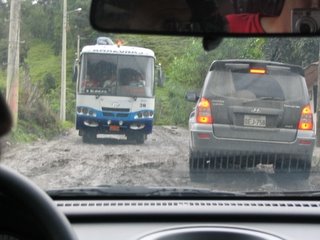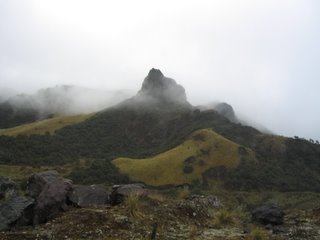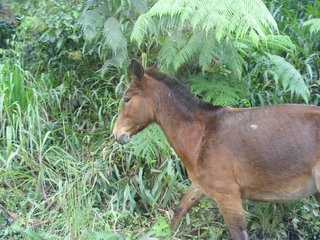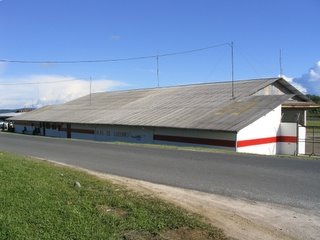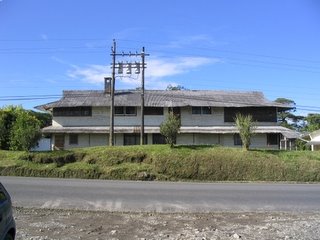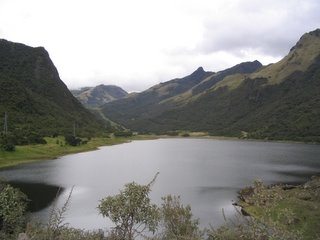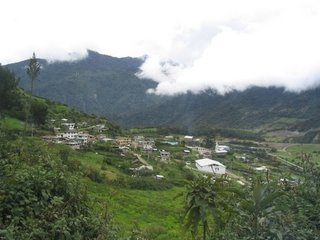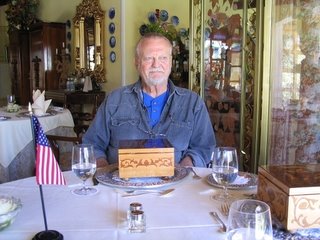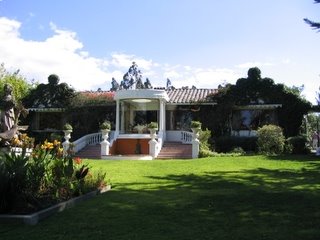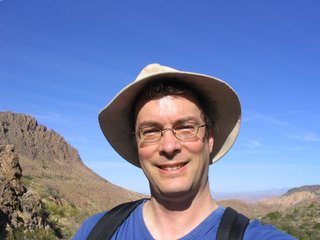August 19, 2006 – The Trip Back to Arizona
So far things are looking ok for our departure around 7:00 a.m. But then we sit on the plane and our departure time comes and goes. Then we get a message that they need fourteen people who are on the airplane to get off with their luggage so we can take off given the elevation and temperature. This sounds quite odd, as there’s nothing unusual about the elevation and temperature at Quito compared to other days. They then also announce that there is a mechanical problem and that further, due to the short power outage, there is a problem with TSA safety rules, so they are going to have to deplane all of us and having us go back through screening for our carry-on luggage. I started wondering between it all if we would get out of Quito at all this morning or today. John later told me that the mechanical problem was that the auxiliary power unit wasn’t working and they couldn’t get it fixed and that’s why they needed to have 14 less people on the flight, as they had to fly with less weight. They did get some volunteers to stay in Quito until a later flight, so that seemed to have been taken care of. The security problem was another story. After telling us we’d need to deplane and be rescreened, we just sat there on the plane for close to another hour. It turns out that they only had so many people to do the screening and they had another American Airlines flight next to us that they wanted to get off the ground before they rescreened us, so that’s why we sat there for a good long while. We eventually did depart the plane, forming a long line for the screeners to do their thing. I don’t really get what the power outage had to do with it though. They went through my bags as they had previously, with the only additional thing that was done being that they frisked me (as they did everyone), whereas they hadn’t done that before. But I don’t know why a power outage would relate to them not frisking me the first time around? Oh well, not worth worrying too much about. We do finally take off from Quito, about two and a half hours late, around 9:30 a.m. or thereabouts. All three of us had two hour layovers in Miami, which seemed sufficient to go through customers and catch our connecting flights. But we knew we had no chance to make our flights in Miami with such a late departure from Quito. We were far from alone in this circumstance.
We were also quite hungry, as we didn’t have any breakfast in Quito, and the anticipated breakfast on the plane didn’t come until it was getting towards noon. Mom and John did have a number of granola bars left from what they had initially packed down to Ecuador, so that helped a bit. We did get some nice views of the Andes Mountains as we headed north from Ecuador, and got a view of the Panama Canal also.
We got into Miami at about 2:15 p.m., wondering what later flights would be available to catch, as we all were quite intent on sleeping in our own beds tonight. Fortunately we zipped through customers very quickly. I didn’t get a single question from the customs officer. He just stamped my form and I was through. Then we got in the American Airlines line with all the other folks who had missed their flights and were trying to find other flights to get to their destinations. Fortunately we all got on flights, with Mom and John getting a 4:30 p.m. flight to Los Angeles, and I got a 4:05 flight to Dallas, with a connecting flight then to Phoenix. I used John’s cellphone to call Isaac and Sally to let them know about the delays, as they are picking me up at the airport in Phoenix. I have to rush to get to my gate for my 4:05 flight, saying a quick goodbye to Mom and John as they head off to their own gate. We’re not sure who will get home first, as they have a direct flight, but they have to take a shuttle from the airport a good distance to get home, while I live relatively close to the airport in Phoenix. Surprise, surprise, my flight to Dallas ended up being delayed for over an hour, as the plane we were to use was late getting in from Heathrow. But at least I figure it gives more time for my luggage to get onto the plane to Dallas!
We arrived in Dallas just before 7:00 p.m., with quite a number of people on the flight again missing connections. I should be able to make my connection, as the flight is at 7:45 p.m. to Phoenix. I get to my gate with a bit of time to spare, but there’s a plane in that gate for Chicago, and they are in the midst of boarding, so I don’t see how they’ll be boarding my plane to Phoenix for a 7:45 departure. Well, I go grab a quick bite to eat and then come back, and the Chicago plan is still sitting in the gate. I ask the person at the gate if the Phoenix flight is still leaving there on schedule from that gate, and incredulously to me, he says yes. Well, within a few minutes he announced a gate switch for our Phoenix flight, so we scurry over to the new gate and we get boarded there, departing Dallas around 8:30 p.m. or so. While in the Dallas airport, a number of television screens have the New England Patriots vs. Arizona Cardinals preseason game on and the Cardinals are losing. Phoenix residents know well the constant failings of the Cardinals franchise, so seeing them losing on television reminds me that I’m getting closer to home.
We get into Phoenix around 8:30 or so local time, meaning that I’ve been traveling now for, oh, almost nineteen hours. Time to get home and get a good night’s sleep. I get my luggage and Isaac and Sally, my good friends from church, pick me up and take me home. I’m home between 9:30 p.m. and 10:00 p.m. I figure with my delays that Mom and John may have gotten home before me, but it turns out that they called me at about 10:30 p.m., and they were still at LAX, just getting their shuttle to take them back up to the Antelope Valley, as the shuttle before didn’t show up to pick them up. They end up not getting home until around 12:30 a.m., so technically their trip lasted a day longer than mine, a distinction I’m sure they weren’t excited to achieve!













